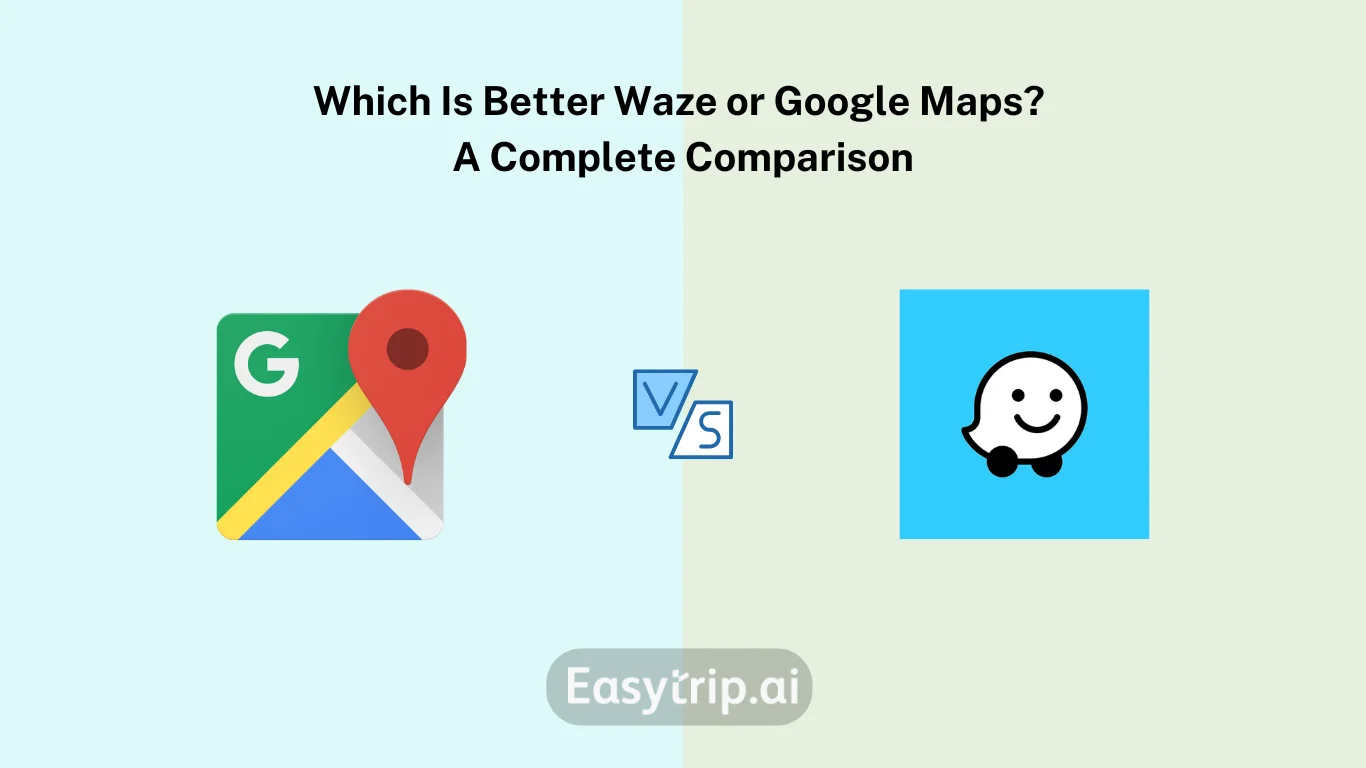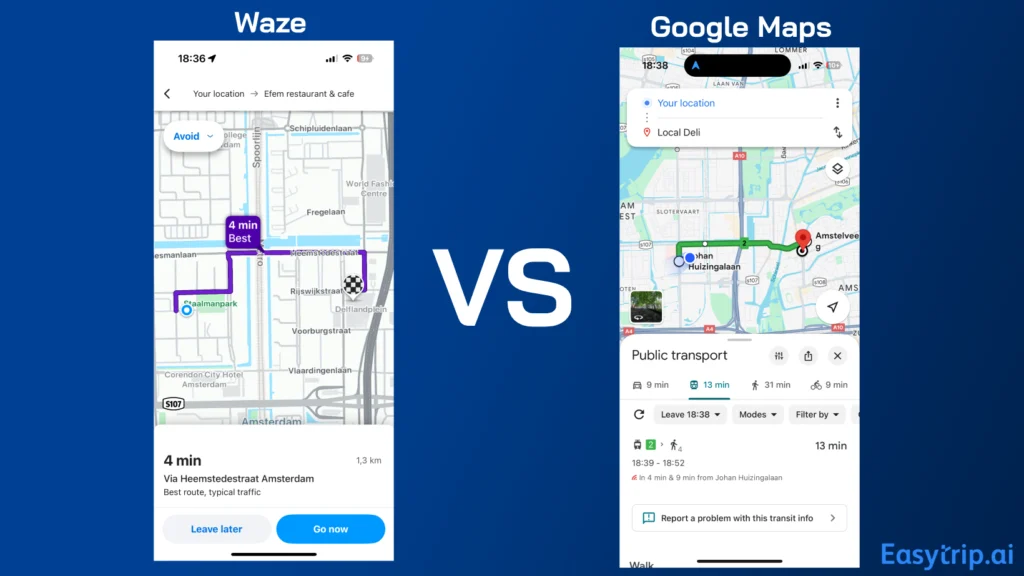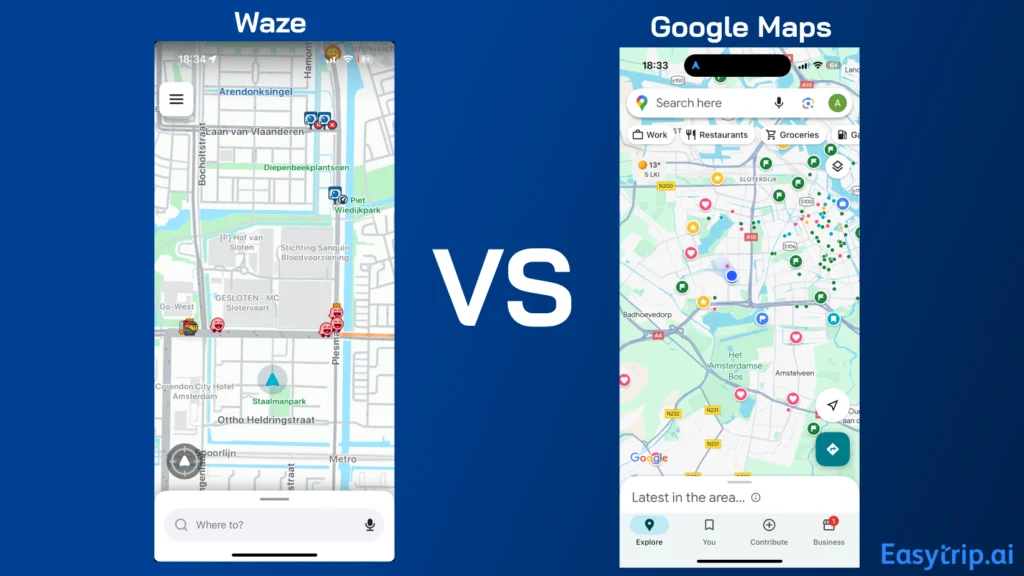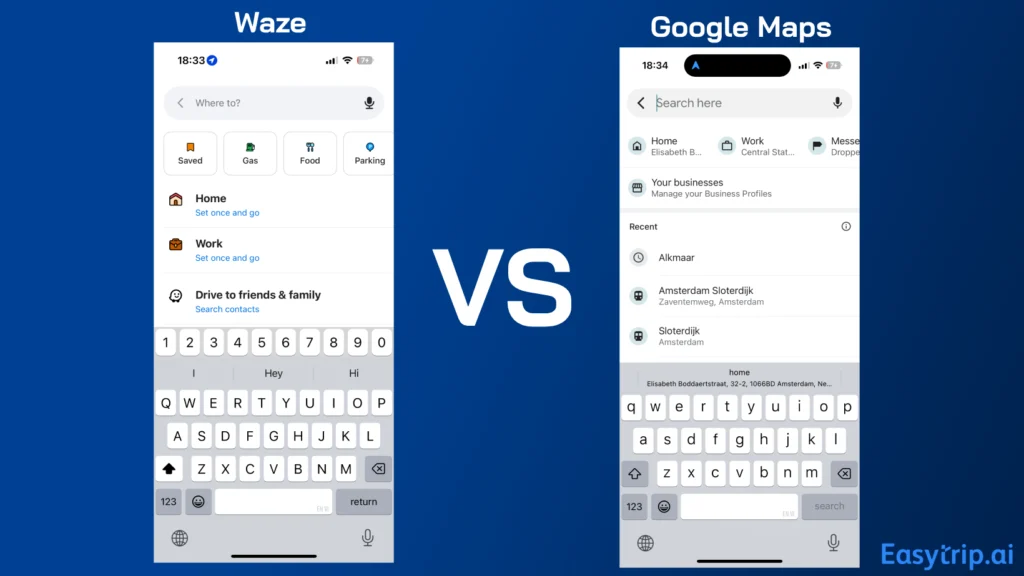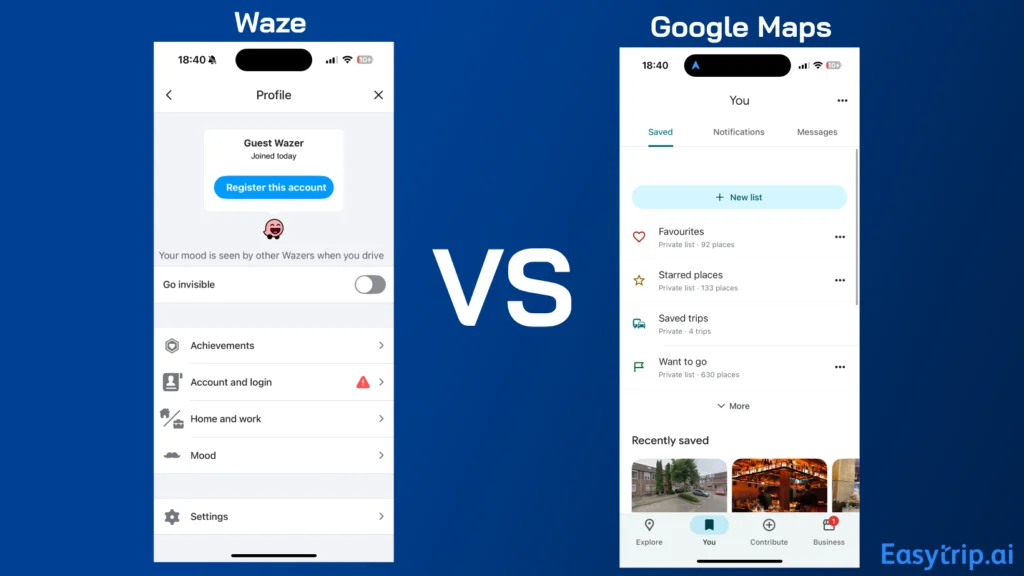In a world where navigation apps are crucial companions for travelers and commuters alike, the debate on whether Waze or Google Maps reigns supreme is ever pertinent. These two leading navigation applications, both under the jurisdiction of Google, yet distinct in their approach, vie for dominance in mobile devices across the globe. While Waze harnesses the power of community-driven updates for real-time traffic navigation, Google Maps offers a comprehensive suite of features from business details to public transport information. This comparison will dissect each app feature-by-feature, helping you determine the best fit based on your individual needs.
Overview of Waze and Google Maps
Waze and Google Maps are pillars in navigation technology, each boasting unique strengths tailored to user demands. Understanding their core functionality is key to appreciating their strengths and how they can best serve you. Waze thrives on real-time data, driven by its active user community to offer immediate navigation insights and traffic reports. Meanwhile, Google Maps provides a detailed mapping experience with satellite views and robust database support for a wide array of travel needs.
What is Waze?
Waze is a navigation app that leverages social interaction to provide real-time updates on traffic conditions, road incidents, and alternative route suggestions. Acquired by Google in 2013, Waze primarily focuses on delivering the best possible driving experience by integrating crowd-sourced data. It actively encourages users to share live reports about traffic jams, accidents, or road hazards, hence enhancing its ability to suggest the most efficient routes at any given time.
- Community-Centric Model: Waze’s reliance on user input ensures a high level of interaction and engagement, turning drivers into active reporters. This fosters a tight-knit community of drivers contributing to the app’s accuracy and usefulness.
- Dynamic Routing: Utilizing real-time conditions, Waze suggests alternate routes if significant delays are reported, often providing options that reduce travel time by bypassing congested areas.
- Interactive Interface: Waze combines a visually engaging, gamified interface with elements like trivia or challenges, promoting higher user involvement.
- Customization Options: Users can personalize their navigation experience, from selecting different voices including celebrity cameo voices during specific events, to customizing vehicle icons for a more personalized touch.
Waze’s approach to navigation revolves around maintaining up-to-the-minute accuracy, making it an ideal tool for those who wish to navigate efficiently through high-traffic environments.
What is Google Maps?
Google Maps, launched in 2005, serves as a comprehensive navigation and mapping service utilized by millions worldwide. Unlike Waze, Google Maps caters to a broad spectrum of transportation options, including walking, biking, driving, and public transport, making it a well-rounded tool for both local and long-distance travel. It offers detailed maps with satellite imagery, panoramic street views, and an exhaustive database of local business information.
- Extensive Mapping Capabilities: Google Maps employs a mix of satellite imagery and user-generated content to deliver a robust mapping experience. Its street view and 3D mapping features allow users to explore locations virtually.
- Multi-Modal Navigation Support: The service accommodates various modes of transportation, ensuring that it’s versatile enough to navigate not only drivers but pedestrians and cyclists too.
- Business and Points of Interest: Google Maps integrates business information, allowing users to discover restaurants, shops, and services along their route or at their destination. User reviews and photos provide an additional layer of insight.
- Offline Access: Users can download geographic areas for offline navigation, an invaluable feature for traveling in areas with limited connectivity.
By offering a vast array of features, Google Maps positions itself as the go-to app for comprehensive navigation, adapting to various needs and ensuring a seamless, all-encompassing mapping experience.
Ownership: How Both Belong to Google but Serve Different Needs
Both Waze and Google Maps are products under Google’s expensive umbrella, yet they cater to diverse user needs, a distinction that is both strategic and functional. Google, by keeping them distinct, has crafted navigation tools that complement each other rather than compete.
- Waze’s Community Focus: Waze thrives on user-generated content, being the go-to choice for drivers seeking real-time traffic updates and dynamic routing based on current road conditions. Its utility in urban driving scenarios is unparalleled due to the swiftness of its updates.
- Google Maps’ Broader Appeal: This app is integrated into the Google ecosystem, working seamlessly with other Google services like Calendar and Assistant. It appeals to users who require broader functionalities, such as exploring points of interest or utilizing public transport.
- Strategic Cohesion: Google’s strategy in maintaining both apps ensures that a user’s specific needs, whether for everyday commuting or cross-country travel, are comprehensively covered without overlap.
Through these complementary yet distinct navigation tools, Google ensures users are provided with the best tool for their journey, whether it requires detailed navigation support or real-time traffic insights.
Feature-by-Feature Comparison
Both Waze and Google Maps have carved niches in the realm of navigation, each offering features that meet specific user needs. Where Waze thrives in providing instantaneous traffic updates through an engaged community, Google Maps excels with its extensive range of features suitable for exploration and multi-modal transport. Understanding these differences is critical when choosing between them.
User Interface and Ease of Use
Waze and Google Maps differ significantly in their user interface, each reflecting the underlying philosophy and functionality of the app. Waze’s interface feels lively and interactive, immediately immersing users into a map populated with live updates and reports submitted by fellow drivers. Its design is bold, utilizing vibrant icons to signal important information such as hazards, police traps, or traffic jams. While this dynamic display is beneficial for engagement, some may find it distracting due to the overload of information.
Conversely, Google Maps adopts a more minimalist and user-friendly approach. Its clutter-free layout emphasizes accessibility, presenting users with a straightforward interface that prioritizes ease of use. The search bar and menu are designed for intuitive navigation, allowing users to quickly find destinations, explore map views, or switch transportation modes without unnecessary complexity. For those who favor simplicity over the engaging chaos of Waze, Google Maps offers a serene alternative.
Despite differences, both apps place importance on voice-guided navigation. Google Maps pairs its voice commands with Google Assistant, enabling voice-activated directions and searches, enhancing convenience and safety. Waze, however, goes further by incorporating voice commands that allow users to report incidents or alter routes seamlessly, appealing to those eager to interact with the app and contribute to its community-driven ethos.
Real-Time Traffic Updates and Rerouting
When it comes to real-time traffic updates and rerouting, both Google Maps and Waze offer robust features, each excelling in different aspects. Waze shines in delivering immediate updates through its community-driven data. Users actively report traffic incidents, road closures, and speed traps, resulting in quick rerouting suggestions that help drivers avoid delays. The app’s reliance on real-time user feedback ensures that its recommendations are consistently timely and accurate, making it a favorite among commuters who often face congested routes.
Google Maps also provides real-time traffic information, utilizing a combination of historical data, user reports, and sensor data to inform its route suggestions. However, its updates may not be as swift as Waze’s, particularly when it comes to rerouting options following an accident. Google Maps typically suggests alternative routes but may not automatically adjust unless significant traffic delays are detected.
Both apps support voice navigation, although Waze offers more customization options, including the choice of various voice packs that even feature celebrity.
Voice Navigation and Customization
Both Waze and Google Maps have advanced voice navigation capabilities, but they cater to different preferences and needs. Waze places a strong emphasis on user customization, allowing drivers to select from a variety of voices, including some that are themed or celebrity-endorsed during special promotions. This flexibility adds an engaging touch to the driving experience, personalizing the journey according to varied user tastes.
In contrast, Google Maps integrates its voice navigation with Google Assistant, offering a no-fuss, hands-free control option. This allows users to issue commands, search for destinations, or check traffic updates without lifting a finger, enhancing safety while driving. While it may lack the whimsical variety of voice options that Waze provides, its practicality shines through in busy or high-pressure driving scenarios.
Google’s voice interface is streamlined, focusing on the essentials of navigation and search, whereas Waze embraces the community-driven spirit by allowing voice reporting of road conditions. This functionality not only contributes to real-time traffic updates but also deepens user engagement through active participation.
Offline Navigation Capabilities
In terms of offline navigation capabilities, Google Maps takes the lead with its well-structured support for offline use. Users can pre-download maps of specific geographic areas, ensuring smooth navigation even without an internet connection. This feature is invaluable when traveling to remote areas where connectivity is unreliable. While offline, Google Maps provides comprehensive data within the selected area, including points of interest and navigation routes. However, it does not support real-time traffic updates in offline mode, limiting its dynamic capabilities.
Waze, on the other hand, is heavily reliant on real-time data, which means its offline functionality is limited. The app allows caching of recent routes for future use, but its community-driven updates and dynamic routing features are unavailable without a data connection. For users journeying through urban areas with stable internet connections, this reliance poses no problem, but it could be a significant limitation for those venturing off the beaten path.
Public Transport Integration
Public transport integration is where Google Maps excels, offering comprehensive route planning for a variety of public transport modes, including buses, trains, and subways. This feature, combined with live updates on transit schedules and disruptions, provides users with a flexible and reliable navigation tool for urban commuting. Google Maps also offers information on various transport options, including estimated arrival times and live status updates, ensuring travelers have the data they need at their fingertips.
Conversely, Waze lacks any capability to incorporate public transportation directions, focusing solely on optimizing driving routes. This significant limitation makes it unsuitable for users who rely primarily on public transport for their daily commutes or travel plans. While its driving navigation features are top-notch, those needing comprehensive public transport assistance will find Google Maps more to their liking.
Business Listings and Points of Interest
Google Maps dominates in terms of business listings and points of interest. It offers a rich tapestry of data with user reviews, photos, ratings, and detailed descriptions. Its integration with Google services allows users to effortlessly explore nearby services and attractions via the “Explore” feature, presenting tailored recommendations based on user preferences. For those interested in discovering the local scene or finding new places to visit, Google Maps stands unrivaled.
Waze provides basic business listings mainly focusing on essential services like gas stations and restaurants along common routes. Although it highlights businesses through “Branded Pins,” it does not match the depth of information offered by Google Maps. Waze’s design is more aligned with practical needs during a drive rather than exploratory endeavors, spotlighting drivers’ immediate requirements over leisurely exploration.
Reporting Accidents, Hazards, and Police Traps
The approach towards reporting accidents, hazards, and police traps is another clear distinction between the two apps. Waze excels with its community-driven model that actively encourages user participation, resulting in a highly responsive and self-updating network. Drivers can report incidents live, keeping their fellow users informed and collectively contributing to a smoother driving experience. This capability is central to Waze’s appeal, ensuring it provides some of the most timely and reliable updates available.
While Google Maps has incorporated real-time incident reporting similar to Waze, it generally relies more heavily on official data sources and historical information. While still functional and beneficial, this mode doesn’t boast the immediacy of Waze’s user-led updates. As such, drivers seeking the fastest, most responsive updates may find more satisfaction using Waze.
Map Accuracy and Updates
Map accuracy and updates are areas where Google Maps leverages its extensive database, including satellite imagery and regular updates, to deliver some of the most accurate and up-to-date maps available. This thoroughness benefits users who require precise navigation support, ensuring that routes for walking, biking, and driving remain correct and efficient.
Waze, driven by user-generated data, also maintains high accuracy by swiftly integrating real-time reports on road conditions. This method means its maps reflect current traffic conditions faster than those of Google Maps, a benefit for drivers navigating through frequently changing urban landscapes. However, the accuracy of Waze maps can be contingent on the volume and reliability of user contributions.
When to Use Waze
Waze is highly advantageous in specific scenarios, particularly for daily commuters and those navigating high-traffic areas. Reflecting on the feature-by-feature comparison, Waze delivers real-time updates through its community-driven model, making it an ideal choice for those prioritizing speed and efficiency in their daily drives.
Best for Daily Commuters and Drivers in High-Traffic Areas
Waze caters excellently to daily commuters and drivers tackling high-traffic zones, capitalizing on its strengths in real-time traffic updates and dynamic route adjustments. The app’s user community actively provides updated reports on road conditions, ensuring drivers are kept in the loop with regard to sudden traffic changes or incidents. For individuals frequently commuting in busy urban environments, this feature can significantly reduce travel time by suggesting optimal routes that bypass congestion.
- Real-Time Adaptability: Users receive immediate rerouting suggestions based on current conditions, effectively guiding them around traffic jams, accidents, or road work, enhancing the overall drive-time efficiency.
- Up-to-the-Minute Traffic Alerts: The alerts keep users informed of potential delays, supporting a proactive driving strategy aimed at avoiding unnecessary hold-ups.
- Driver-Centric: Its interface, focused on speedy navigation, benefits those driving daily through densely populated areas prone to traffic.
By honing in on real-time traffic management, Waze positions itself as the indispensable tool for navigating city traffic efficiently.
Community-Based Features and Road Reports
Community-driven features are at the core of Waze’s design, enabling users to contribute to a shared network of navigation data. Engagement through road reports, including police trap alerts, traffic jam warnings, and hazard signals, reinforces a sense of community amongst users and adds precision to its routing capabilities.
- User Contributions: Each user’s report enriches the app’s capability to provide accurate and immediate traffic updates, raising the app’s efficacy as a social navigation tool.
- Collective Road Insights: Through real-time user data, Waze evolves with its users’ needs, adapting constantly to the driving environment.
- Social Interaction: Interaction between users creates a more connected driving community, where information sharing becomes a mutual benefit.
These elements not only enhance the functionality of the app but also cultivate a cooperative driving network that prides real-time feedback and social connectivity.
When to Use Google Maps
In contrast to Waze, Google Maps is most beneficial in situations involving travelers, tourists, and users who require multi-modal navigation solutions. Drawing from the feature-by-feature insights, Google Maps excels with its extensive data and adaptability across various transport means.
Best for Travelers, Tourists, and Multi-Modal Navigation
For travelers and tourists, Google Maps emerges as an invaluable resource, offering not only driving directions but also an extensive suite of features that enhance exploration and navigation. Its ability to accommodate multiple transport modes makes it perfect for navigating unfamiliar terrains or cities.
- Versatile Navigation: Supports walking, biking, driving, and public transport, tailoring journey options to fit the user’s preferences and circumstances.
- Detailed Exploration Features: Provides in-depth information on local businesses, landmarks, and attractions, complete with user reviews and photos to aid decision-making.
- Offline Map Downloads: Ensures navigation even in rural reaches lacking connection, a beneficial feature for remote area travel.
This capability makes Google Maps a powerful tool for journey planning, accommodating varied needs and contexts with its depth and breadth.
Comprehensive Information for Walking, Biking, Transit, and Driving
Google Maps excels in delivering comprehensive navigation solutions across all modes of transport, accommodating users from diversely commuting backgrounds. Its attention to detail and incorporation of various navigation modes increase its utility.
- Multi-Modal Accessibility: Offers seamless integration between different transportation forms, whether traveling within a city or embarking on cross-country adventures, ensuring optimal route planning.
- Extensive Database: The integration of business information, reviews, and nearby attractions supplements route guidance, enriching both functional and exploratory experiences.
- Real-Time Transit Updates: Provides precise updates on public transport schedules and routes, particularly useful for urban commuters.
By embracing a complete navigation solution, Google Maps reaches beyond driving to provide inclusive and versatile user experiences.
Pros and Cons
Summarizing the earlier discussion on when each app truly shines, both Google Maps and Waze have their pros and cons to consider, highlighting their ability to serve modulated user needs in varying circumstances.
Pros and Cons of Waze
Waze leverages its strengths in dynamic traffic updates and community-centric navigation, excelling at providing accurate and efficient driving solutions. However, its focus on driving alone can be a limitation for users needing more diverse navigation options. The amount of data input from fellow users can occasionally clutter the interface or cause distractions, which might detract from safety.
Pros:
- Real-time traffic updates
- Community engagement
- Customization options
- Low data usage
Cons:
- Limited to driving
- No offline maps
- Distracting interface
Pros and Cons of Google Maps
Google Maps stands out with its broad navigation capabilities, supporting various modes of transport and offering detailed exploration features. However, its extensive interface may overwhelm some users, and reliance on consistent data usage might prove cumbersome in low-service areas.
Pros:
- Multi-modal navigation
- Offline functionality
- Detailed discovery features
- Better integration with Google services
Cons:
- Less real-time interaction
- Higher data usage
- Limited customization
Feature-by-Feature Comparison: Waze vs Google Maps at a Glance
To help you decide which navigation app best fits your needs, here’s a side-by-side comparison of Waze and Google Maps across key features:
| Feature | Waze | Google Maps |
| Ownership | ||
| Launch Year | 2006 (acquired by Google in 2013) | 2005 |
| Core Focus | Real-time, community-driven driving navigation | All-in-one mapping for multiple transport modes |
| User Interface | Interactive, gamified, info-rich | Clean, minimalist, intuitive |
| Traffic Updates | Real-time via community reports | Real-time via data + user reports, but slower to adapt |
| Rerouting | Fast, dynamic rerouting based on user reports | Alternative routes suggested but less dynamic |
| Voice Navigation | Customizable (celebrity voices, etc.) + voice reporting | Integrated with Google Assistant, hands-free commands |
| Offline Navigation | Limited (cached recent routes only) | Strong support (downloadable maps, full offline navigation) |
| Public Transport Integration | Not supported | Fully supported (bus, train, subway, real-time schedules) |
| Business Listings & POI | Basic (gas stations, essential stops) | Extensive (reviews, photos, hours, contact, etc.) |
| Map Accuracy | High accuracy based on real-time user input | High accuracy via satellite + data sources |
| Accident & Hazard Reporting | Community-based, fast updates | Available but less real-time, more official data |
| Best Use Case | Daily driving, commuters in high-traffic areas | Travelers, tourists, multi-modal navigation needs |
| Customization | High (vehicle icons, voices, themes) | Low (focused on utility) |
| Social/Community Features | Strong (reports, interaction, contribution) | Minimal |
| Integration with Google Services | Limited | Deep integration (Calendar, Assistant, Search, etc.) |
| Data Usage | Low | Higher (due to richer data) |
| Pros | Real-time updates, strong community, low data use, fun UI | Multi-modal, offline support, robust info, Google ecosystem |
| Cons | Driving only, limited offline use, cluttered UI | Less real-time input, more data usage, less customization |
Final Verdict
Choosing between Google Maps and Waze depends significantly on personal needs and preferences, taking into account each app’s unique offerings and limitations. For commuters and urban navigators seeking real-time traffic updates and dynamic rerouting, Waze offers undeniable advantages with its community-driven model. Its ability to keep users informed of road conditions in real time makes it an ideal tool for drivers who prioritize efficiency and time-saving.
In contrast, Google Maps caters to a wide array of transport modes, appealing to travelers, tourists, and users seeking comprehensive navigation solutions. Its integration with Google’s ecosystem and emphasis on exploration provide a well-rounded, user-friendly platform that enhances the travel experience. The ability to navigate offline combined with detailed information about local businesses and points of interest make it particularly suited for exploration.
Ultimately, both navigation apps have respective strengths, and users should consider the specific context and requirements of their journeys when making a choice. Whether opting for the real-time insights of Waze or the extensive features of Google Maps, the critical factor remains a clear understanding of one’s navigation needs, ensuring a better travel experience.

